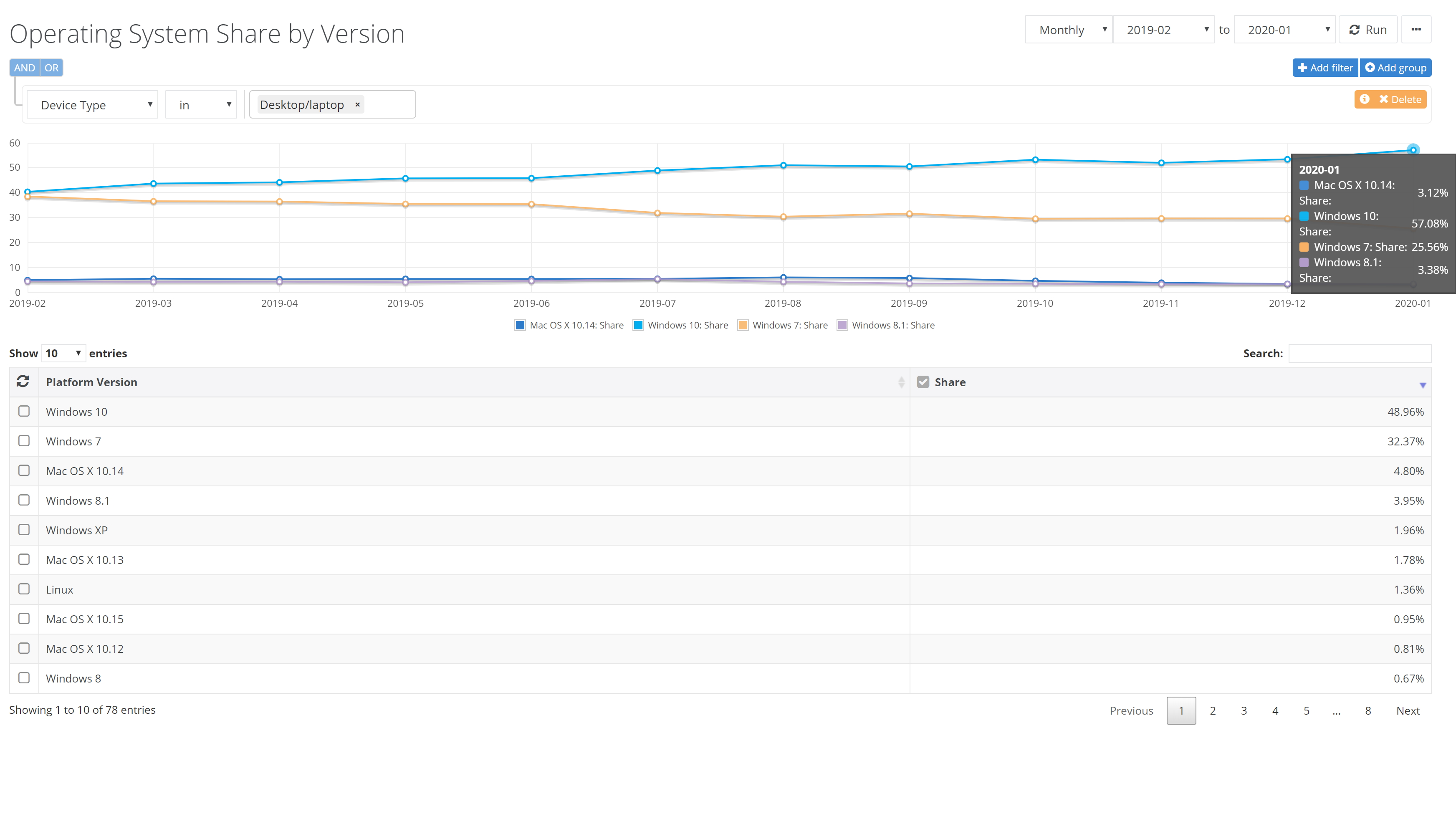Windows 7 is dead, but people still aren't moving to Windows 10
Not enough people making the switch

After Windows 7 entered its End of Life phase on January 14, 2020, Microsoft was clearly hoping that people would ditch its old operating system and upgrade to Windows 10, and the latest report by NetMarketShare does suggest that’s happening – but perhaps not in the numbers Microsoft was banking on.
NetMarketShare is a company that tracks operating system (and other software) usage online, and while it doesn’t account for devices that aren’t connected to the internet (or which opt out of its tracking), it does give us a good idea of what operating systems people are using.
- How to reinstall Windows 10
- How to upgrade to Windows 10 for free
- We solve 100 common Windows 10 problems
Its latest report is the first one published after Microsoft stopped supporting Windows 7, and it does show a slight dip in Windows 7 market share – with 25.6% of people using the older operating system, compared to 29.57% in December 2019.
Meanwhile, Windows 10’s market share has risen slightly from 53.36% in December 2019 to 57.08%. That roughly corresponds with the market share drop of Windows 7, and while these results show things moving in the right direction, Microsoft is likely to still be disappointed.

Small gains
The main reason for this is that the expected big leap in Windows 10 user numbers did not materialise. While these results might still be a bit too early to fully judge what the impact of Windows 7’s End of Life will have on operating system market share, the fact that there was only a modest shift from Windows 7 to Windows 10 is a bit concerning.
Plus, as we move away from the date of Windows 7’s End of Life, publicity around it will fade, which means we could see fewer people being persuaded to upgrade.
And, while the number of Windows 7 users has dropped, there is still a huge number of people using the outdated OS. Windows 7 remains the second most used operating system, after Windows 10.
Get daily insight, inspiration and deals in your inbox
Sign up for breaking news, reviews, opinion, top tech deals, and more.
The third most used OS is Windows 8.1, on 3.38%, followed by macOS 10.14 on 3.12% - highlighting just how much Apple is struggling to get people to buy Macs and MacBooks. Microsoft should at least take some solace in that.
Edging it
There’s some more good news for Microsoft, however, as its improved Edge internet browser is gaining market share – now 7.02% compared to 6.07% in December. Microsoft’s move to base Edge on the Chromium engine could be paying off.
Meanwhile, Edge’s main competitor, Chrome (also built on the Chromium engine) had a slight dip in market share, falling to 66.93% - down from 68.06% the previous month.
Firefox, another big rival, also saw a drop in users – now at 8.12% compared to 8.27%.
While Edge increasing its market share at a time when its rivals are dropping is good news for Microsoft, once again those numbers are pretty modest, and Edge is still a long way off challenging Chrome’s dominance when it comes to browsers.
So, while these results are good for Microsoft, they’re not great. We’re sure the company will be hoping that February’s results see an even bigger swing from Windows 7 to Windows 10 when it comes to users.
- These are the best web browsers of 2020
- Best PC VPN: stay safe and secure on Windows
Via MSPowerUser

Matt is TechRadar's Managing Editor for Core Tech, looking after computing and mobile technology. Having written for a number of publications such as PC Plus, PC Format, T3 and Linux Format, there's no aspect of technology that Matt isn't passionate about, especially computing and PC gaming. He’s personally reviewed and used most of the laptops in our best laptops guide - and since joining TechRadar in 2014, he's reviewed over 250 laptops and computing accessories personally.